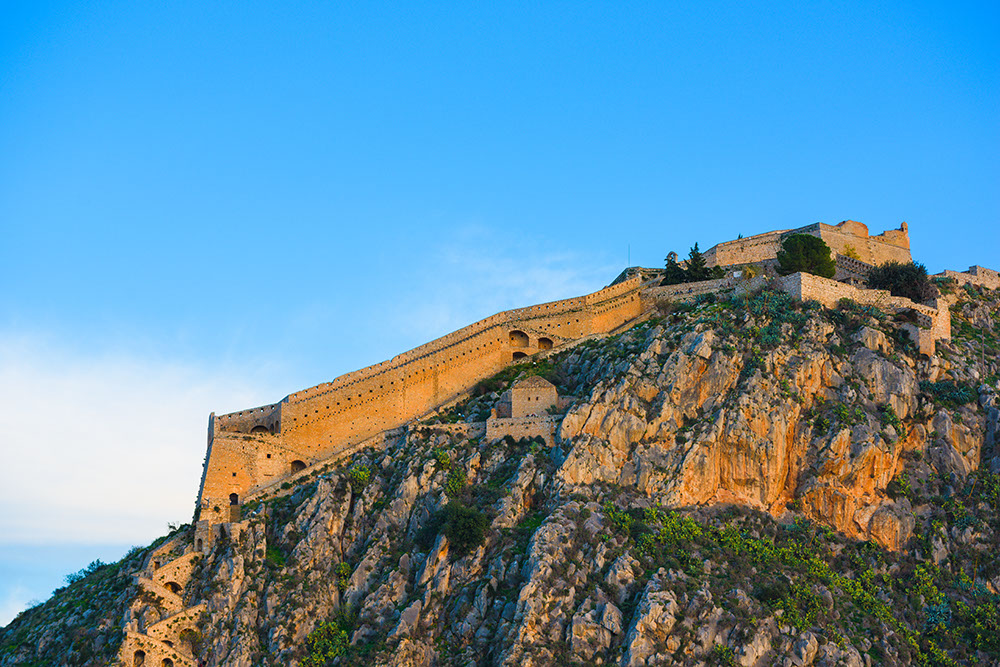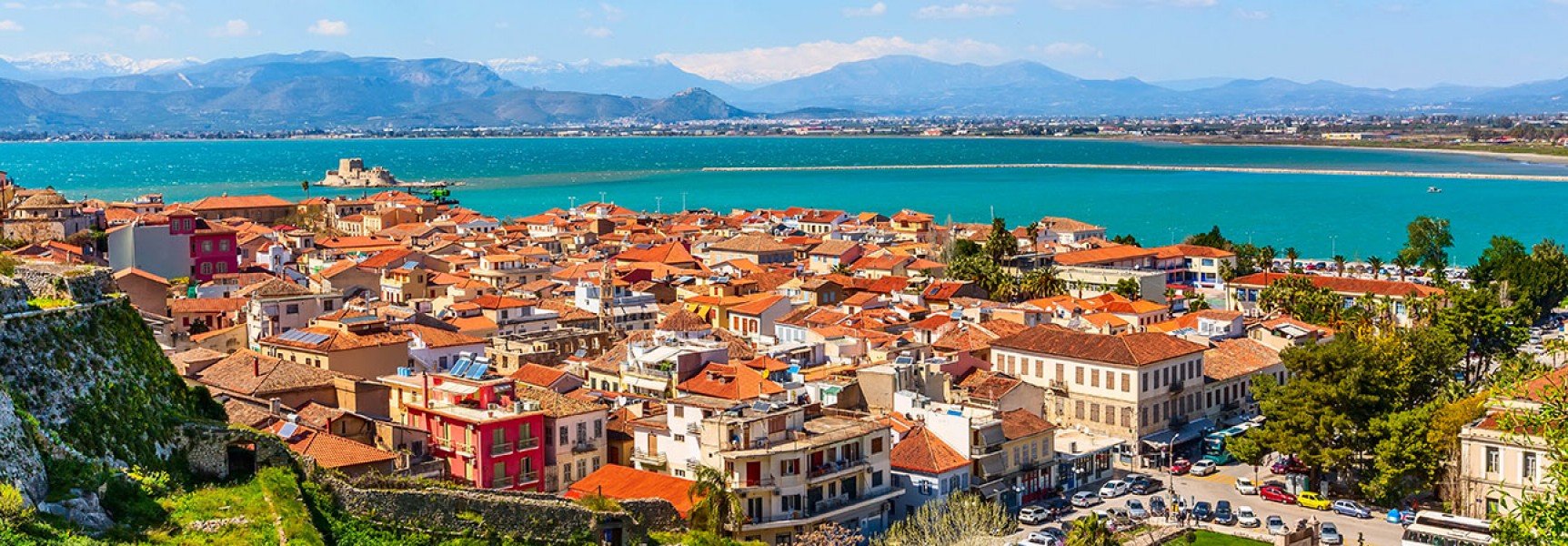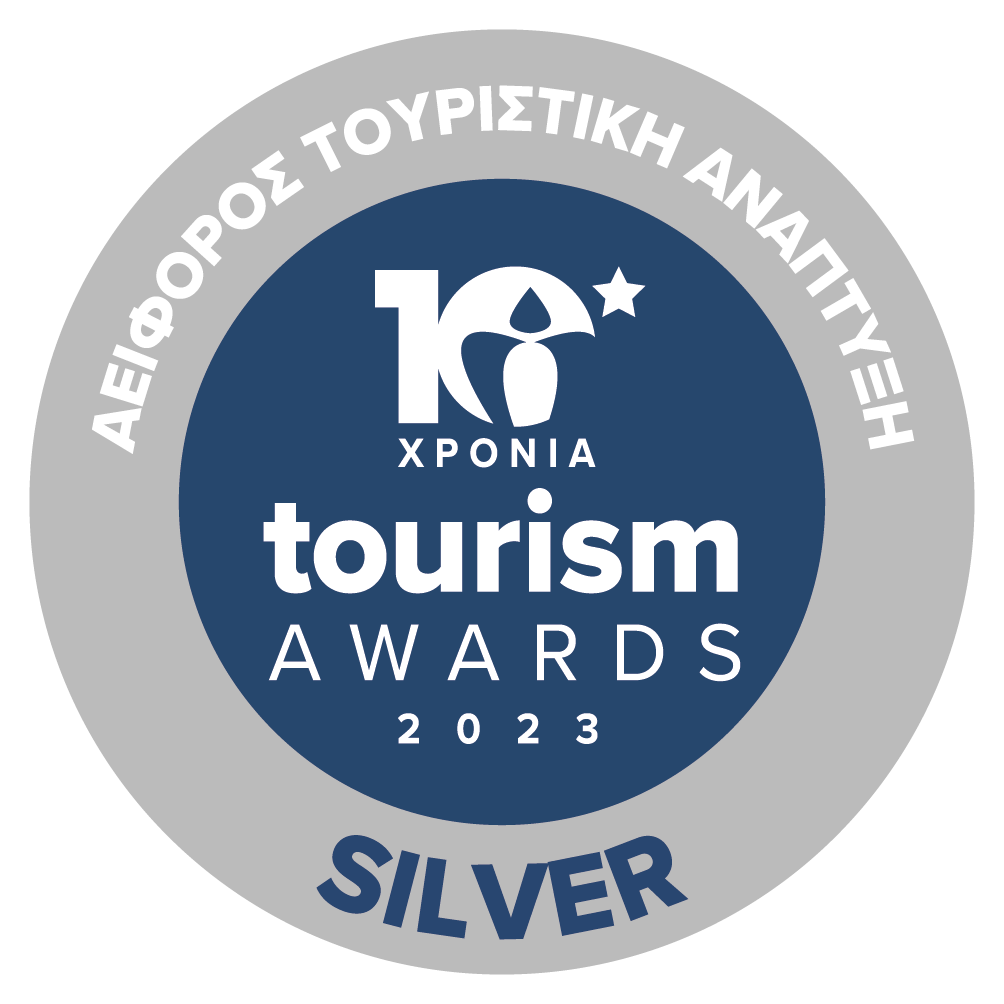Nafplio. Eternally charming, eternally romantic, eternally wonderful
Nafplio. Eternally charming, eternally romantic, eternally wonderful
Nafplio, Anapli or Napoli di Romania… Whatever name you give it, the first capital of free Greece is a unique city-museum, with a history full of myths, conquerors and revolutions.
With the aura of the old capital, Nafplio always manages to impress, radiating elegance and romance, emitting, at the same time, the special aroma of its long history.
Every corner, every monument of Nafplio whispers something from its significant past. Timeless whispers of history, which you will hear behind the cyclopean walls of Palamidi, in front of the church of Agios Spyridon, on the windswept rocks of Akronafplia, in the picturesque cobbled streets of the city.
Let's walk together in the neighborhoods and squares of old Nafplio and let's collect images of a city, famous for its refined finesse. The conquerors, who passed through the city over the years, left their strong marks on the architectural and cultural character of Nafplio, giving the city its cosmopolitan personality, which, to this day, remains unchanged and fascinates everyone.
Walking inside the walls

The heart of the old town of Nafplio is the enclosed Syntagma square, the largest square in the city and the favorite of the people of Nafplio. Considered by many as one of the most beautiful squares in Greece and being, without a doubt, a point of reference and meeting of all the inhabitants of Nafplio, the square is surrounded by great historical monuments, all valuable witnesses of the rich historical past of the city. To the east of the square dominates the Trianon, a former Turkish mosque, which housed the first Mutual School of Nafplio, while opposite it stands the imposing three-storey building of the Archaeological Museum, which houses the invaluable archaeological treasures of Argolida. In a corner of the square stands the Parliament, an impressive and extremely well-preserved two-storey Ottoman mosque, which was the first Parliament of the Greek state and today is one of the most recognizable historical monuments of Nafplio.
Leaving Syntagma Square behind us and following Kapodistriou Street, our route leads to the church of Agios Spyridon, the place where the first governor of Greece, Ioannis Kapodistrias, was assassinated in 1831. The incident, which took place just outside the church and determined the developments of modern Greek history, is depicted on a plaque on the wall of the church, containing a fragment of the deadly bullet. Almost opposite the church is the only hamam of the city, reminiscent of the short historical passage of the Ottomans through the city.
Passing through the labyrinthine cobbled streets of Nafplio, with the magnificent buildings that highlight the medieval past of the city, it is worth paying attention to two more squares, which are located there. In Agios Georgios square and in the square of the three Admirals. The first took its name from the famous, homonymous metropolitan church, the first Metropolis of free Nafplio and a place where events of top historical significance unfolded. The funeral of the German of Old Patras, the great hero Dimitrios Ypsilantis and Ioannis Kapodistrias was held in this church. Otto was also crowned king here, while inside the temple and in a prominent position, is one of the best copies of the Last Supper of Leonardo da Vinci. The Square of the Three Admirals was dedicated to the protagonists of the naval battle of Navarino and hosts, among others, the burial monument of Dimitrios Ypsilantis, the magnificent neoclassical building of the City Hall, which was the first High School of free Greece, and the first Greek pharmacy, the property of an Italian pharmacist and personal friend of Kapodistrias, Boniface Bonafin, who undertook to embalm the assassinated prime minister after his death.
Outside the walls. The tour of Arvanitia

The favorite walk of the people of Nafplio is one of the most romantic walks in the city. The famous tour of Arvanitia, a regional paved pedestrian street, overlooking the Argolic Gulf, starts at the end of the waterfront and ends at Arvanitia Square. After passing the area, where the facilities of the Nautical Club are located, we meet the church of Panagia Spilia, the Santa Maria Grotta of the Venetians, a favorite pilgrimage of residents and visitors, just before the route ends at Arvanitias Square, with its organized beach. To return again to the old town, we descend to Staikopoulos Park and the Gate of the Land, which, in the past, was the only entrance from land to the walled Nafplio. In front of the gate, which opened at sunrise and closed at sunset, there was a sea moat and access was by a wooden drawbridge. The Gate of the Land, which we see today, is a faithful representation of the authentic Venetian gate. From the original, the plaque with the coat of arms of the Venetian commander Grimani was saved, as well as the stone headless lion, at the top of the gate.
Palamidi. The sleepless guard of the city

The most recognizable monument of Nafplio is located at the top of the steep cliff, just above the city, which seems to have been crowned, reverently, for centuries. The mythical hero Palamidis, son of the first founder of the city, Nafplio, gave his name to the rock and consequently to the impressive castle city of Nafplio, which is a masterpiece of fortress architecture. The so-called "Gibraltar of the Eastern Mediterranean" is an impregnable fortress, built at an altitude of 216m. and was based on a system of eight impressive-sized bastions, connected by walls. Palamidi became known in history as a prison for prisoners of conscience - Theodoros Kolokotronis was imprisoned in the Miltiadis bastion - while inside, today, every visitor can see the typical features and buildings of an organized castle city. A unique experience is the access to Palamidi from the stairs, carved in the rock, (999 according to the tradition, 857 in fact), as on the wide stairs, at intervals, there are suitable places for a few breaths of rest, offering, at the same time, an amazing panorama to the Argolic gulf and the natural landscape of the area, which will compensate all the senses.
Bourtzi and Acronafplia

A stone's throw from the waterfront of the city, stands, in the middle of the sea, the island of Bourtzi, with its homonymous Venetian castle. The presence of castello gives a romantic note to the scenery of the seaside town and is its trademark. The most photographed monument of Nafplio, was built on the island of Agios Theodoros during the years of Venetian rule, to strengthen the defense of the city against unwanted conquerors. For the additional protection of the port and Nafplio, a mobile chain started from Akronafplia and ended in Bourtzi, which contributed to giving Nafplio the Venetian name porto Cadena (port of the chain). During its turbulent history, Bourtzi often changed uses and functions and the residence of the executioners of Palamidi, came to function as a restaurant and luxury hotel. Today, in the areas of the Venetian castle, which floats in the blue waters of the gulf, musical and cultural events take place, mainly during the summer.

The rocky peninsula of Acronafplia was the citadel of Nafplio, which the Turks called Its Kale (inner fortress). It is considered the oldest citadel of Nafplio and the first fortifications are placed in classical times. Acronafplia consists of three levels, each of which was a separate castle with walls, built in different historical periods. Romans, Byzantines, Venetians, Franks and Turks took care to leave, successively, their mark in the construction and completion of this important fortification project, the remains of which are preserved, to this day and are visible to every visitor. The acquaintance with Akronafplia starts from the square, which is located above the beach of Arvanitia and leads to the old hotel Xenia. Passing successively the Castel del toro, the Frankish castle and the Roman castle, the church of Agioi Anargyroi appears, while on the plateau below the Old Clock, you can enjoy one of the most beautiful sunsets of Argolida.
So indulge in the romantic atmosphere and finesse that the Argolic state emits and feel your heartbeat beating louder. Nafplio, moreover, is considered a city that is very much loved by the ubiquitous bon viveurs and lovers. You;













